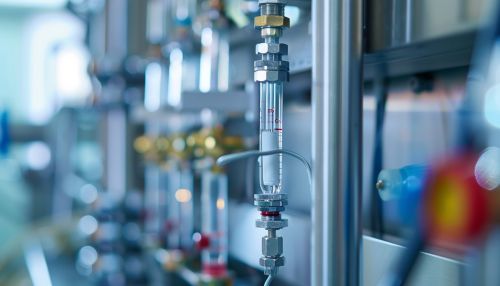Gas Electrodes
Introduction
A gas electrode is a type of electrode that is used in electrochemical cells and involves a gas as one of the reactants. These electrodes are a critical component in various electrochemical processes, including fuel cells, batteries, and electrolysis systems.


Structure and Composition
Gas electrodes are typically composed of a metal or metal alloy that is porous, allowing the gas to permeate through the electrode and participate in the electrochemical reactions. The choice of metal depends on the specific application and the type of gas involved. For example, platinum is often used in fuel cells due to its high catalytic activity and resistance to corrosion.
Operation Principle
The operation of a gas electrode involves the interaction between the gas, the electrode material, and the electrolyte. The gas molecules diffuse through the porous electrode and reach the electrode-electrolyte interface, where they participate in redox reactions. The electrons produced or consumed in these reactions are then transferred to or from the external circuit, contributing to the current flow.
Types of Gas Electrodes
There are several types of gas electrodes, each designed for specific applications and gases. These include:
Hydrogen Electrodes
Hydrogen electrodes are used in a variety of applications, including pH measurement and as a reference electrode in electrochemical measurements. They consist of a platinum electrode in contact with hydrogen gas and an acidic electrolyte.
Oxygen Electrodes
Oxygen electrodes are commonly used in fuel cells and metal-air batteries. They typically consist of a porous metal electrode, often made of platinum or silver, in contact with oxygen gas and an electrolyte.
Carbon Dioxide Electrodes
Carbon dioxide electrodes are used in the electrochemical reduction of carbon dioxide, a process of significant interest for carbon capture and storage. These electrodes are typically made of metal catalysts that can facilitate the reduction of carbon dioxide to useful products.
Applications
Gas electrodes are used in a wide range of applications, including:
Fuel Cells
In fuel cells, gas electrodes are used as both anode and cathode. The anode is typically a hydrogen electrode, while the cathode is an oxygen electrode. The hydrogen gas at the anode is oxidized to produce protons and electrons, while the oxygen gas at the cathode is reduced to form water.
Batteries
In metal-air batteries, a gas electrode is used as the cathode. The most common example is the oxygen electrode in a zinc-air battery, where oxygen from the air is reduced to form hydroxide ions.
Electrolysis Systems
In electrolysis systems, gas electrodes are used to facilitate the electrochemical reactions. For example, in water electrolysis, a hydrogen electrode is used at the cathode to produce hydrogen gas, while an oxygen electrode is used at the anode to produce oxygen gas.
